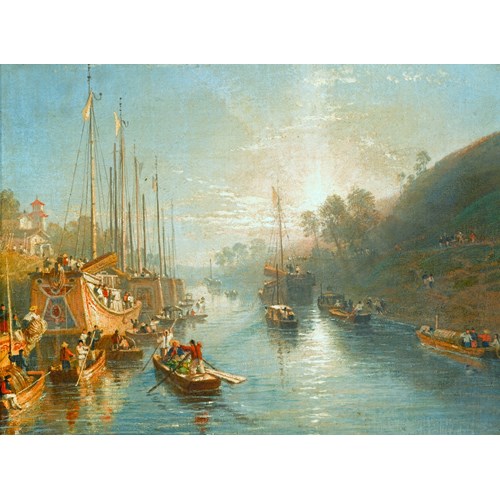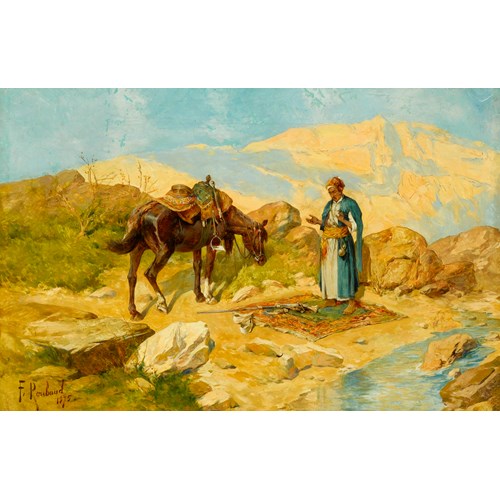Hendrick Bogaert
A Still Life of Earthenware Pots, Barrels, Baskets, Jugs, an Earthenware Plate with Fish together with Ducks in a Barn
Epoque 1600-1750, 17th century
Origine The Netherlands
Medium Oil on panel
Dimension 37.2 x 35.3 cm (14⁵/₈ x 13⁷/₈ inches)
The sturdy terracotta vessels are endowed with a realistic solidity by the light that glances off their varnish and conveyed by the artist with a summary brushstroke on a handle, a side or on a lid. The precarious positioning of this haphazard array provides an interesting commentary on Dutch still life paintings of this type. While the clear disorder suggests reality, it also reinforces a sense of transience in both the ease with which the tower of items could come tumbling down as well as in the dead nature of the fish and the fruit. Just as the fish have been trawled from the sea, so the fruit has been plucked and whilst it looks inviting and vibrant now, it too will soon be dead and rotten.
Although little is known about the life and work of Hendrick Bogaert, a number of paintings which had traditionally been attributed to the Delft painter Egbert van der Poel (1621-1664), have recently been added to Bogaert’s output.
It is known that Bogaert primarily painted barn interiors. This type of painting, standing midway between interior and still life painting, became increasingly popular in the seventeenth century among artists such as François Rijckhals (1609-1647), Herman Saftleven (1609-1685), Cornelis Saftleven (1607/8-1681) and van der Poel, who all shared stylistic similarities. Both Saftleven and Rijckhals painted barn interiors though it was Rijckhals who first specialised in a fusion between still life and the popular Flemish peasant and stable interior. It has been suggested that Rijckhals could have received training in the workshop of Adriaen van der Venne and moreover that Rijckhals was a teacher to the great Willem Kalf (1619-1693) who also practised the same blend of interior and still life. A larger horizontal composition similar to the present painting was sold Munich, Helbing, 1903 (date unknown), lot 12 (as by Willem Kalf) and has had attributions to Kalf, Cornelis Saftleven, and most recently to Egbert van der Poel. As the present work shows, Bogaert fits well into the group of artists that contributed to the development of this specific subject.
We are grateful to Fred G. Meijer for suggesting the attribution to Hendrick Bogaert on the basis of photographs.
Epoque: 1600-1750, 17th century
Origine: The Netherlands
Medium: Oil on panel
Dimension: 37.2 x 35.3 cm (14⁵/₈ x 13⁷/₈ inches)
Provenance: with Burg-Berger, Vienna, by 1939;
with Noortman Gallery, London/Hulsberg, by 1976;
with Alberts van Smirren, Amsterdam, by 1990;
Private collection, The Netherlands.
Exhibition: Paris, VIIIe Biennale Internationale des Antiquaires au Grand Palais, 1976, no. 15, as by François Rijckhals (with Robert Noortman, London/Hulsberg, according to a label on the reverse).
Plus d'œuvres d'art de la Galerie









